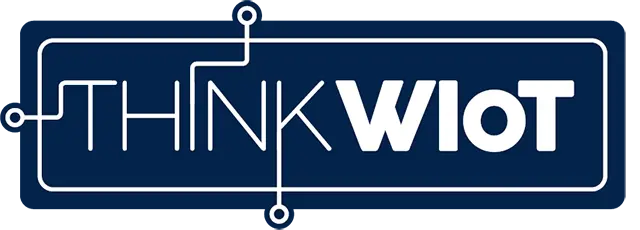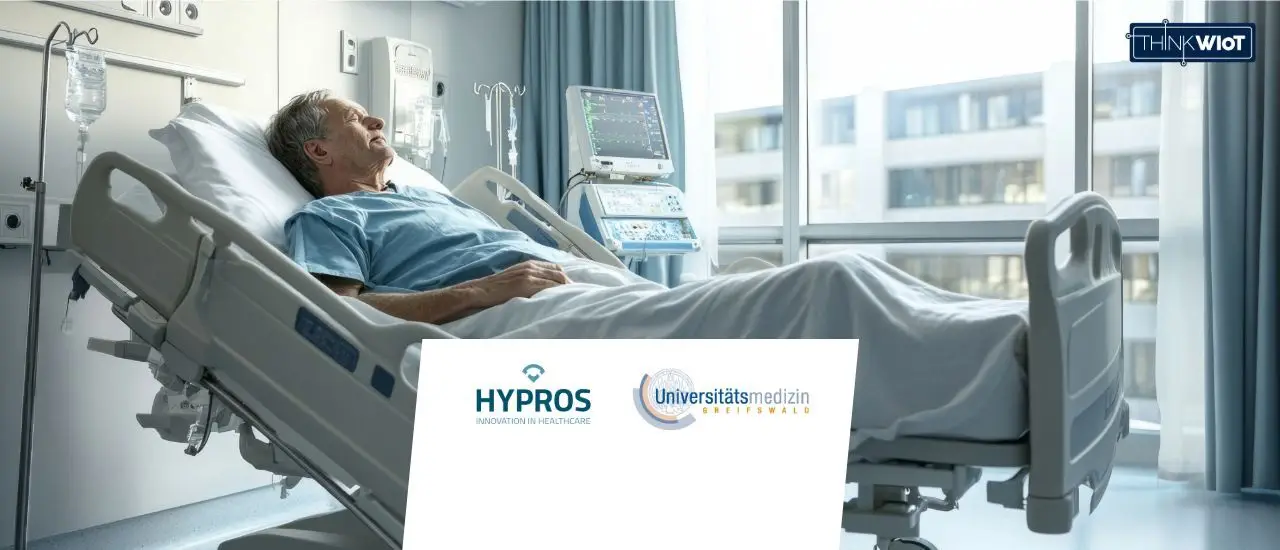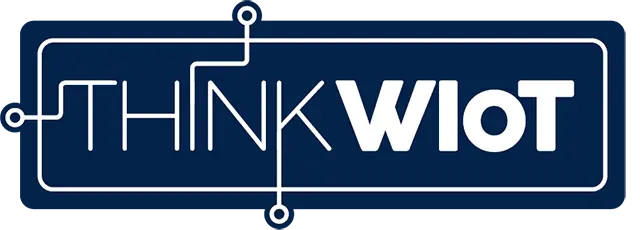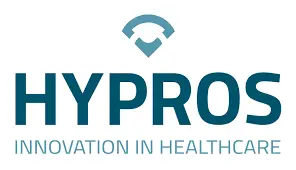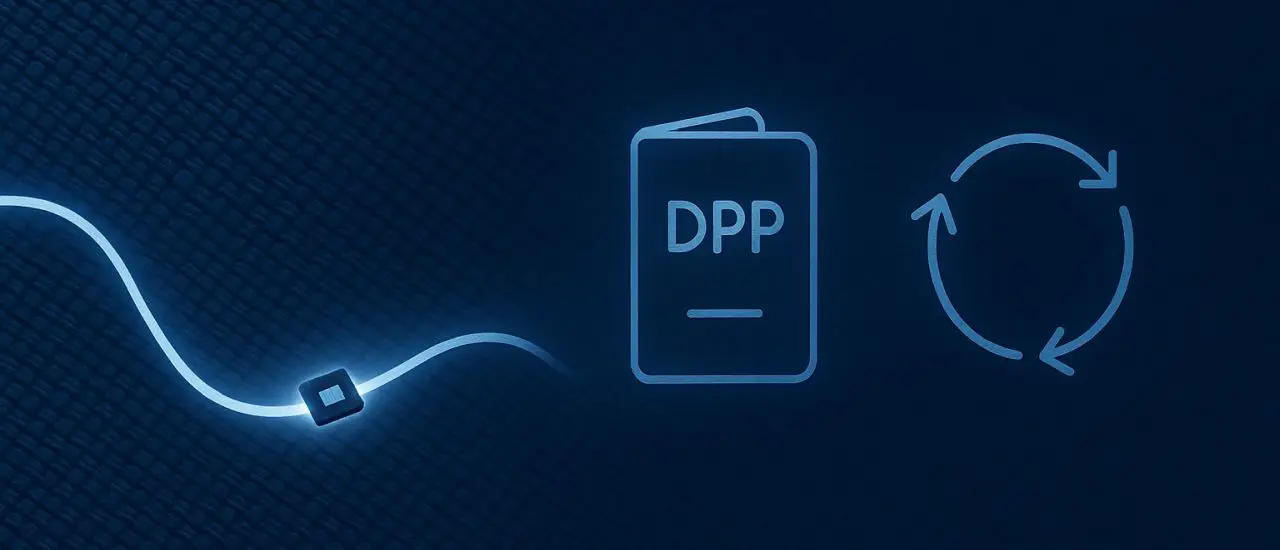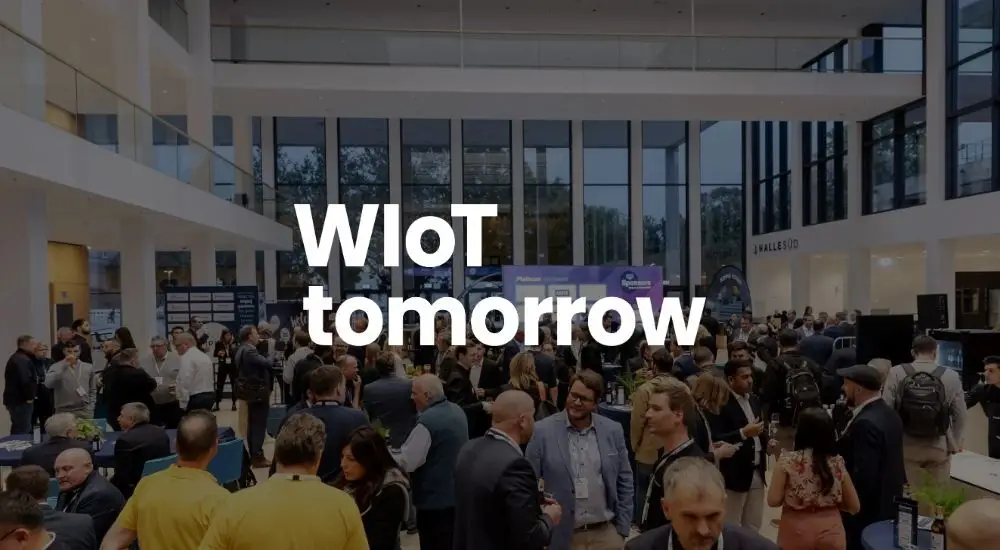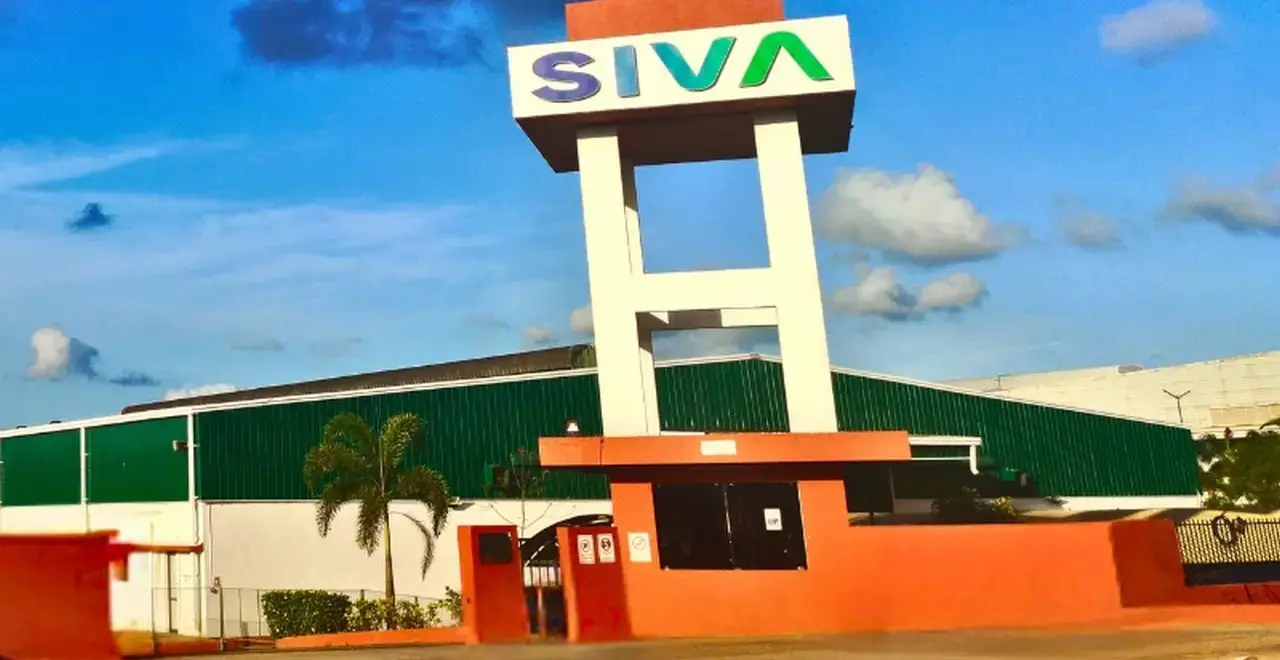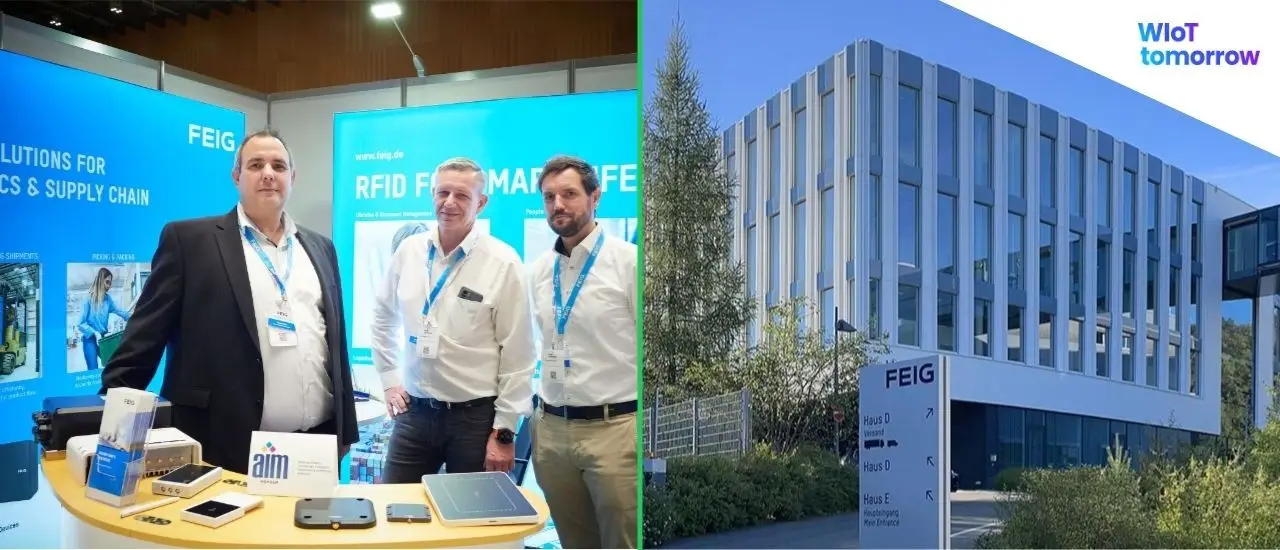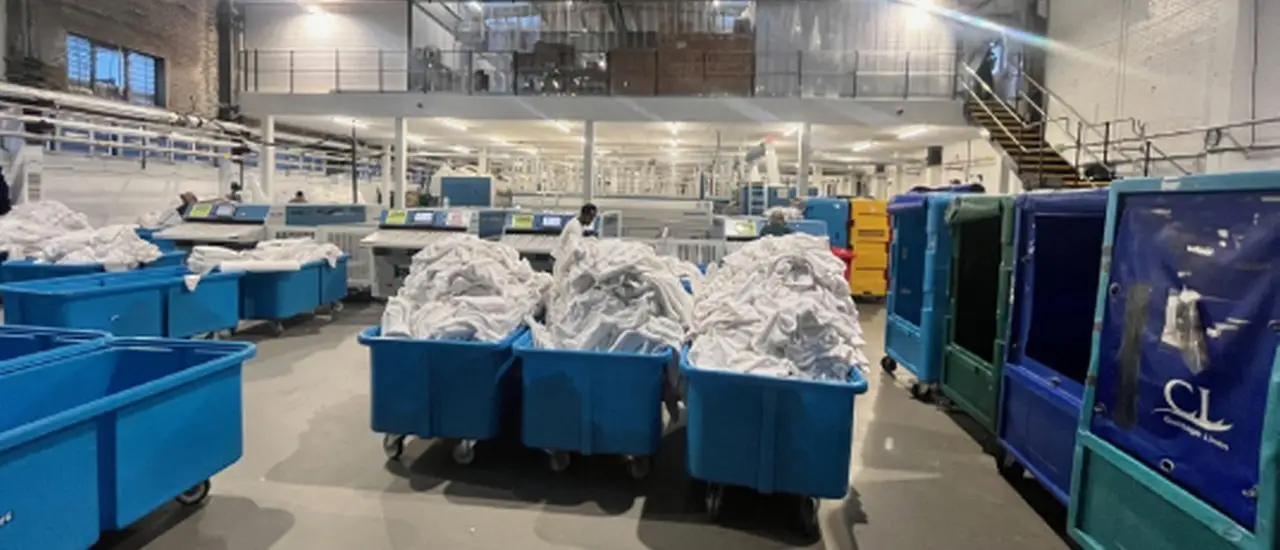- A camera-free, BLE-based sensor array monitors patient activity and environmental conditions to support privacy-preserving observation.
- Multiple sensors (PIR, thermal, time-of-flight, brightness, noise, air quality) enable multimodal detection of patient movement and anomalies.
- AI models hosted on Google Vertex AI analyze sensor streams to distinguish normal from critical behavior and lower false alarm rates.
- Data are centrally processed with options for German-certified data centers or on-premises deployment, and installation requires no structural cabling.
- Real-time alerts integrate with existing hospital systems and HPE Aruba access points to accelerate staff response and reduce care gaps.
At the Department of Neurology at University Medicine Greifswald, a pioneering solution for patient room monitoring is in use: A system based on Bluetooth Low Energy (BLE) sensors and artificial intelligence records movement and environmental data – entirely without cameras and without invasive surveillance.
The system has been in operation since May 2024. Before each shift and ward round, the hospital staff reviews the room activity history to quickly gain insights into patient behavior and possible anomalies.
Developed by Hypros, a company specializing in digital health innovation, this solution is tailored for the needs of hospitals and care facilities. The goal: to improve processes and significantly enhance patient safety. Think WIOT spoke with Tobias Gebhardt, CEO of Hypros.
Sensors and AI in advanced patient monitoring
Digital monitoring to reduce staff workload and detect risks earlier
The shortage of skilled nursing staff is one of the most pressing challenges facing hospitals in Germany. In 2023 alone, around 35,000 positions remained unfilled. According to projections from the Federal Employment Agency, at least 280,000 additional nurses will be needed by 2049.
This shortage increases the risk of critical situations – such as nighttime falls or unnoticed disorientation – going undetected. Smart, sensor-based patient room monitoring can help mitigate these risks and ease the burden on care teams.
About Tobias Gebhardt
Tobias Gebhardt is CEO of Hypros and an experienced entrepreneur in the field of IoT and digital health. Before joining Hypros in 2024, he led GWA Hygiene, which merged with Hypros the same year. He holds a Master's degree in Innovation Management from the University of Southern Denmark. Hypros operates from Lübeck and Stralsund and develops intelligent sensor solutions that combine privacy, automation, and medical benefit.
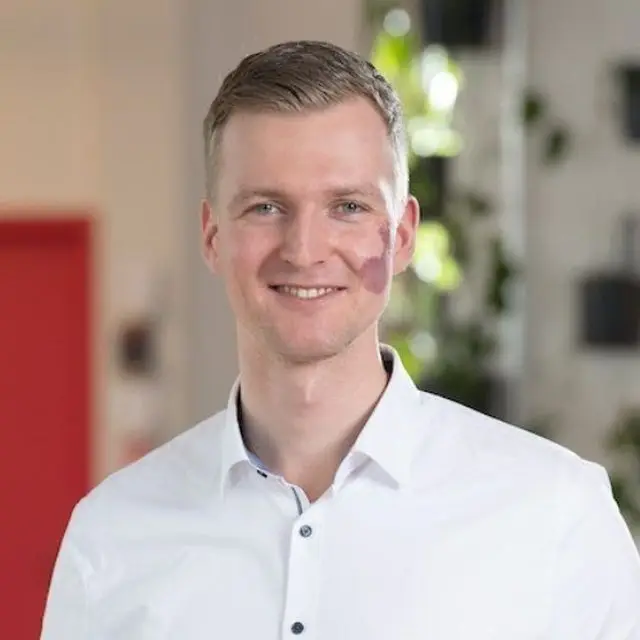

Deployment at the University Hospital Greifswald
The sensor technology for patient room monitoring is already being used successfully and continuously at University Medicine Greifswald, where it helps optimize patient observation and reduce the workload of nursing staff.
The sensor system used in Greifswald is based on a wireless, battery-powered patient monitoring unit mounted on the ceiling of the room. The compact, camera-free device contains multiple sensor technologies that capture a variety of parameters. Motion sensors track activity within the room, while thermal imaging sensors detect the heat profile in the device’s field of view.
A passive infrared sensor (PIR) detects movement, and a time-of-flight sensor measures distance. Additionally, a thermal sensor captures temperature changes, while other sensors analyze factors such as brightness, noise level, and air quality.
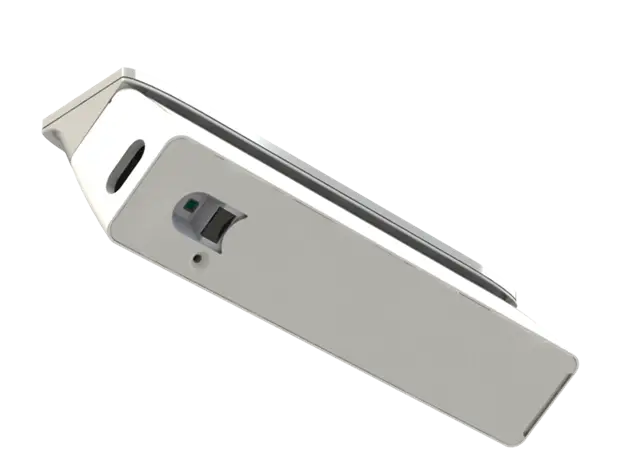
Installation - GDPR compliant and without structural measures
Data protection approval was granted before the solution was installed.
Installation is straightforward: the back plate is attached to the ceiling and the sensor unit is then slid into place. Since no cabling is required, no additional approval from the fire protection authorities is necessary. Data is transferred via the existing access points from HPE Aruba Networking.
Data Transmission via Bluetooth Low Energy
The sensor functions as a data collector and communicates via Bluetooth Low Energy (BLE). Existing access points equipped with BLE antennas can be used for data transfer, eliminating the need for additional infrastructure.
Thanks to the carefully selected sensors and various system optimizations, the solution is energy-efficient. The sensors are battery-powered, and battery life depends on the specific use cases implemented by the customer.
Collection and analysis of sensor data
The collected sensor data is processed on a server and analyzed using AI-powered algorithms. The artificial intelligence accurately identifies movement patterns, such as getting out of bed or a potential fall.
This data is integrated into a dashboard that displays the various parameters over time, as well as into an app that helps medical staff quickly and accurately assess the patient’s condition.
Nighttime Operation and Responsiveness
Especially at night, when nursing staff availability is limited, the sensor-based solution provides crucial information. Restless movements or unusual activity patterns are detected at an early stage, enabling targeted and rapid responses before critical situations arise.
Integration of Environmental Data
In addition to movement analysis, the system also incorporates environmental factors such as noise levels and lighting conditions into its evaluation. Based on this data, disruptions in the sleep-wake cycle can be identified. This allows risks such as confusion or delirium to be detected early and effectively minimized.
Google’s Vertex AI Machine Learning Platform
The AI-powered patient monitoring system is based on Google Cloud Vertex AI, a machine learning platform for the real-time analysis of sensor data. The AI models were trained on large datasets and are built on a specially developed video-based model that detects both the position of patients and their activities within the room.
By comparing movement patterns with predefined scenarios, the system can distinguish normal behavior from critical situations, significantly reducing unnecessary alarms.
Vertex AI also allows for parallel testing and optimization of different model versions, enabling the system to be adapted and continuously improved to meet specific requirements and the individual needs of healthcare facilities.

Data Ownership and Storage
The collected sensor data is centrally aggregated and analyzed by Hypros. Currently, data is stored on servers located in a certified data center in Germany. However, the solution can also be deployed as an on-premises installation directly within the healthcare facility.
Each new customer project begins with a training phase. From the start, differences in patient mobility and bed occupancy – for example, between intensive care units and general wards – are incorporated into the training of the AI model.
How does the system respond to detected anomalies?
By connecting the BLE sensors to existing hospital systems and alarm servers, real-time alerts can be transmitted. An alert is triggered as soon as an anomaly is detected that falls outside the predefined “normal behavior” patterns.
This enables nursing staff to receive targeted notifications, allowing them to respond more quickly to critical situations. As a result, care gaps are reduced and patient safety is improved.
Extended Use Cases for the BLE Sensor Solution
The BLE sensor solution is already being tested in research projects to identify additional use cases. In addition to detecting factors that may contribute to delirium, other applications such as process monitoring are also being explored. For example, the system can detect whether a cleaning staff member entered the room as scheduled and used disinfectant as required.
By combining data from various sensors, the solution enables more precise analyses that go beyond the capabilities of traditional optical or radar-based systems.
About Hypros – Innovation in Healthcare
Headquarters: Stralsund & Lübeck, Germany
Core Focus: IoT and AI Solutions for Healthcare
Technology Expertise: Sensor technology, Real-Time Location Systems (RTLS), Data Analytics, and Process Optimization in Hospitals
Managed Assets: Over 30,000 medical devices tracked in real time
Monitored Area: More than 1.8 million square meters in healthcare facilities
International Presence: NosoEx projects and additional solutions implemented in hospitals across 17 countries
Product Portfolio: Asset tracking, hand hygiene monitoring (NosoEx), bed management, temperature monitoring, contactless patient monitoring, alarm management
Company Mission: Driving digital transformation in healthcare through a leading IoT and AI platform
